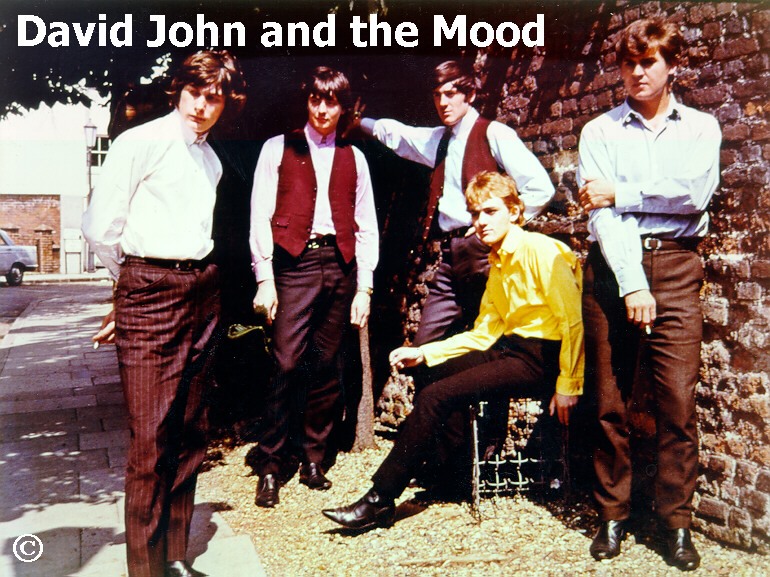David John & The Mood | Interview | New Reissue Soon
A truly fantastic R&B band from Preston, Lancashire that formed in the Winter of 1963 and broke in early 1966 leaving three fantastic singles behind.
The band consisted of David John Smith on vocals, Malcolm Fred Isherwood on drums, John Brierley on bass, Peter Illingworth on lead guitar and harmonica and Peter Atkinson on rhythm guitar.
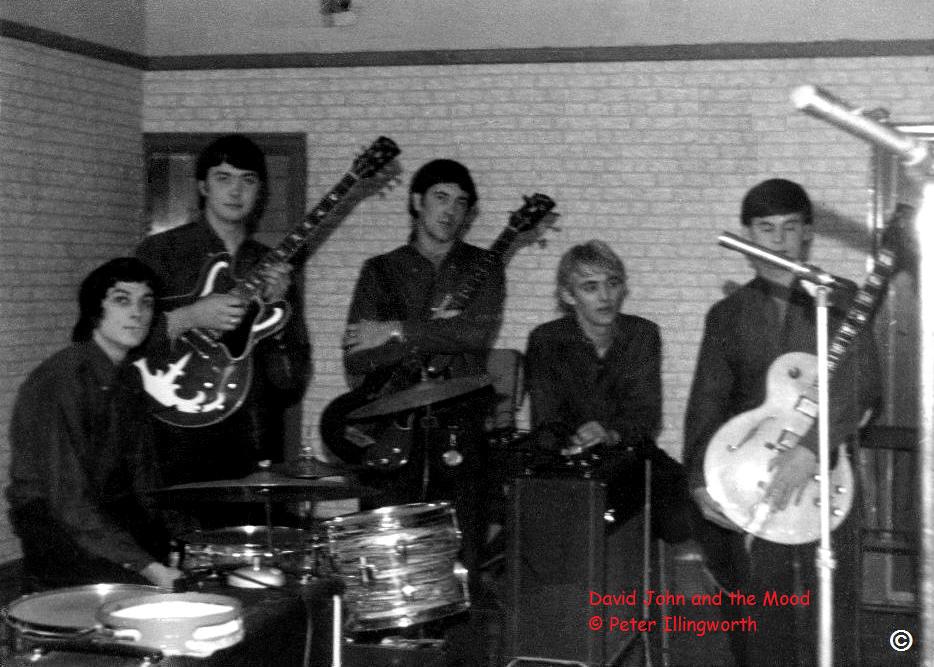
You Are The Cosmos label will be releasing a special vinyl edition around March 2023. More news will follow.
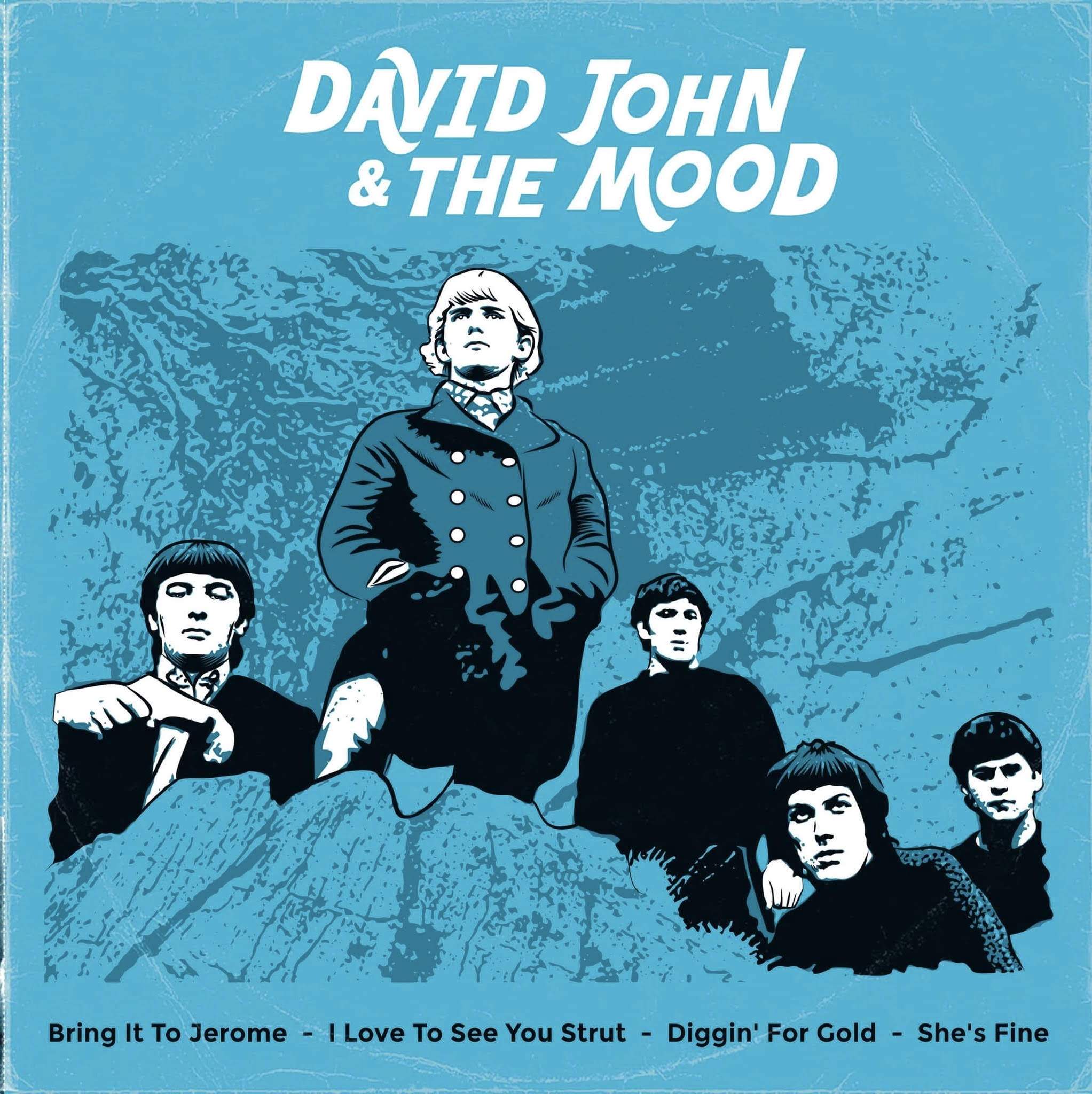
“We all got on well together and really enjoyed performing together and the life that we led for three years”
Where and when did you grow up? Was music a big part of your family life? Did the local music scene influence you or inspire you to play music?
John Brierley: When I was five my family and I all moved to a little village in Wales called Harlech, it is famous for having a superb castle and the song ‘Men of Harlech’. My dad was a music fan, and we grew up with rock and roll music. Early Elvis Presley, Little Richard and many others.
Fred Isherwood: I grew up in a village in Grimsargh, four miles from Preston in Lancashire, England. Music was not really part of my family life. However, when I was 15, I had 2 good friends, John Bretherton and Roy Vickers who played guitar and saxophone. They would come to my house every Sunday afternoon with their instruments. Roy played semi-professionally for a dance band and also enjoyed playing jazz and modern jazz. I didn’t have a musical instrument, so I played along with them using a book for a bass drum, a biscuit tin for a snare drum and the protective grill on an electric fire for a cymbal.
Peter Illingworth [from 2011 interview for It’s Psychedelic Baby! Magazine]: I was born in Lancashire in the North West of England in a small village called Longridge, situated some seven miles from Preston. I am the youngest son of a dairy farmer and was brought up on the farm. I began to be interested in pop music at school where initially I did quite well in the music class. It was a semi-boarding school called Kirkham Grammar School and I was a dayboy, making a daily journey of some 20 miles each way. The only benefit being the fact that there was a record shop called Brady’s at Preston bus station and where I became a regular visitor. I wanted to get a guitar but my mother insisted that I learn the banjo, which belonged to my grandfather. After two lessons I learnt that the fingering was different to that of a guitar and gave up. So I bought my first guitar from a Preston market stall on my way home from school. In retrospect it was an awfully sad specimen but I was able to learn the rudimentaries and chord shapes, helped by some of the boarders at school who had their own group of sorts. I stayed at the home of one guy from my class at school (Graham Haworth) at his mother’s house in St Annes-on-Sea during the summer holidays in 1956/57 and we went to see Lonnie Donegan on stage at the Palace Theatre in Blackpool. He was known as the king of skiffle. It was a revelation and an eye-opener for me. The most wonderful thing I had ever seen and from that day all I wanted to do was to be on stage.
When did you begin playing music? What was your first instrument? Who were your major influences?
Fred Isherwood: Roy Vickers introduced me to the drummer in his band who gave me lessons every Saturday morning in a room above a shop in Preston. He also found a second hand kit for me to buy. It was a standard kit with bass drum, snare, hi-hat, small & large tom-toms and a cymbal. I loved it.
I practiced 2 to 3 hours every day – doing the exercises that I’d been taught on the Saturday and playing along to all the pop records, but mainly Elvis Presley and Buddy Holly. This was between 1960 and 1962.
Peter Illingworth [from 2011 interview for It’s Psychedelic Baby! Magazine]: Lonnie Donegan’s repertoire was a great source of pleasure to me and I had great time trying to learn the songs from his album ‘Lonnie Donegan Showcase’, like ‘Wabash Cannonball’, ‘How Long’, ‘How Long Blues’, ‘Nobody’s Child’, ‘I Shall Not Be Moved’, ‘I’m Alabamy Bound’, ‘I’m a Rambling Man’, ‘Wreck of the Old 97’, ‘Frankie and Johnny’.
My attention was captured by the records that some of my fellow pupils had at the time and these included The Everly Brothers first LP. I was completely besotted by this record which was their 1958 eponymous debut album. The tracks were as follows and are all classics: ‘This Little Girl of Mine’ (Ray Charles), ‘Maybe Tomorrow’, ‘Bye Bye Love’ (Felice Bryant, Boudleaux Bryant), ‘Brand New Heartache’ (Bryant, Bryant), ‘Keep a Knockin” (Little Richard), ‘Be-Bop-A-Lula’ (Tex Davis, Gene Vincent), ‘Rip It Up’ (Robert “Bumps” Blackwell, John Marascalco), ‘I Wonder If I Care as Much’, ‘Wake Up Little Susie’ (Felice Bryant, Boudleaux Bryant), ‘Leave My Woman Alone’ (Ray Charles), ‘Should We Tell Him’ and ‘Hey Doll Baby’ (Traditional, Titus Turner).
I think the first record I actually purchased was ‘I’m Not a Juvenile Delinquent’ by Frankie Lymon and The Teenagers but I had soon purchased the debut studio album by Elvis Presley. It was released on RCA Victor, in mono, catalogue number LPM 1254, in March 1956. My pal at home was a Tommy Steel devotee and when I bought the Presley discs he always stayed true to Tommy Steel. However, there was also a radio station called Radio Luxembourg. The reception was terrible but the records were a delight.
What bands were you a member of prior to the formation of David John & The Mood?
John Brierley: There wasn’t much to do in Harlech so I took up playing the guitar. Eventually I got together with four other local lads, all of us around 14 or 15 years old, and we formed a skiffle group called The Vikings. The group consisted of me on guitar (vocals), Glyn Williams (guitar vocals), Bernard Lee (guitar), Aneuryn Thomas (tea chest bass) and John Diggle (snare drum). Aneuryns’ dad ran the local pub The Queens Hotel, and we occasionally did a gig there. We played skiffle music and rock songs. There was no “music scene” as such in our small village except choirs and brass bands. All our influences were either skiffle; Lonnie Donegan et cetera or rock and roll.
When I was 16 I left Wales (there was decent work there) and moved to Chorley in Lancashire, England. Whilst working there I met up with other guys who were into music and we got together and formed a band called The Thunderbeats. We were a hard driving rock and roll band, and gained quite a following in the North of England. The band consisted of me (guitar vocals), Peter Atkinson (guitar vocals), Jimmy Whittle (bass guitar vocals) and Keith Hartley (drums and occasional vocals). Around this time we met a guy called David John Smith, who was heavily into blues music, and due to his influence we started putting blues into our set, usually things by John Lee Hooker, Bo Diddley et cetera. By now we had included Dave in the band to sing some tunes. When the band folded Dave and I formed The Questions, the line up was Dave Smith (vocals), Reg Welch (guitar), Gene Carbury (drums) and myself. I had now switched to playing bass guitar. We only did four gigs, then Reg and I joined Freddie Starr and The Midnighters, a Merseyside group. This was at the time of The Beatles, The Searchers and many other Merseyside bands. Freddie was later to become quite a famous comedian in England, but he was for now just a vocalist. The band played all over the UK and even went to the famous Starr Club in Hamburg, Germany. Freddie eventually left to become an actor/comedian, and so the band split.
Fred Isherwood: When I considered myself fairly proficient, I answered an advert in the local press, when a newly formed group was looking for a drummer. This group was called The Corries – not to be confused with the Scottish folk group with the same name. We played at youth clubs and local small dance halls, pop songs of the time, including The Beatles’ early numbers. We played at a talent contest on the South Pier at Blackpool. On the bill also were The Four Pennies (who would later have a hit record), and The Falcons, who were Preston’s top group at the time along with The Thunderbeats. That night was the start for me because I received a phone call a couple of weeks later from Peter Illingworth, lead guitarist with The Falcons. They were being offered a recording contract with David John Smith as their vocalist. Their drummer did not wish to turn professional. They had remembered seeing me at Blackpool and invited me to join them. They had a summer season to complete at the Picador Club in Blackpool and that’s when I became a Falcon.
As a note of interest – Andrew Leigh, who was lead guitar in The Corries, became bass player for Matthews Southern Comfort who had a massive hit (in America too) with ‘Woodstock’.
Peter Illingworth [from 2011 interview for It’s Psychedelic Baby! Magazine]: I had been playing in my band The (Fabulous) Falcons around the Lancashire area from 1960 in various combinations of musicians and by 1963 the most recent members as a four piece were as follows: Rob Dekka on electric piano, Rick Greenwood on bass, myself on guitar/vocals and a drummer called Fred Isherwood. Unfortunately The Falcons never recorded any material.
After only a few gigs with this line-up we were approached to play at a regular Friday night hop at the Queens Hall, which in Winter was the covered-over Saul Street Swimming Pool, and in doing so, it was put to us by the promoter Paddy Jones, that if we allowed his compere to sing with us, it would help to raise his profile in the town. We agreed to this and duly went along to his home to sort out some music to play. This in itself was a revelation, because suddenly we were turned on to Bo Diddley, John Lee Hooker and Jimmy Reid. The compere was David Smith (Miffy). So began an experiment in R&B, and a love affair for me with Bo Diddley’s music. The Queen’s Hall gigs gathered momentum; on one we shared the stage with Freddie Starr and The Midnighters. Freddie swung across the stage in true Tarzan fashion as we tried to “get seriously into” our music. There were Liverpool bands appearing regularly every Friday night.
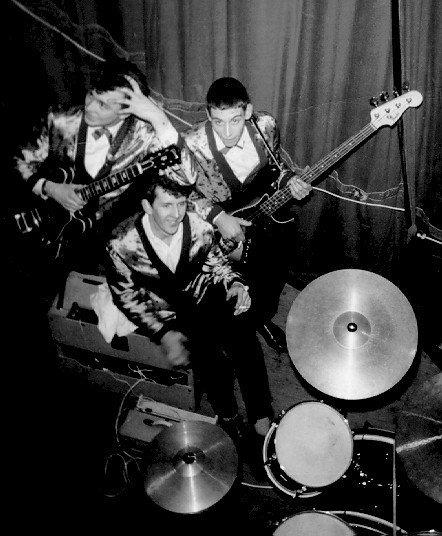
Can you elaborate the formation of David John & The Mood?
John Brierley: I returned to Preston and joined David John & The Mood as their bass player. The band now consisted of David John (vocals), Peter Atkinson (guitar), Peter Illingworth (guitar vocals and harmonica), Fred Isherwood (drums) and me (bass guitar vocals).
Fred Isherwood: The Falcons would become David John & The Mood. At the start we had Rob Shenton on keyboard and Rick Greenwood on bass, but these were subsequently replaced with Peter Atkinson on rhythm guitar (ex Thunderbeats) and John Brierley on bass (ex Freddie Starr & The Midnighters).
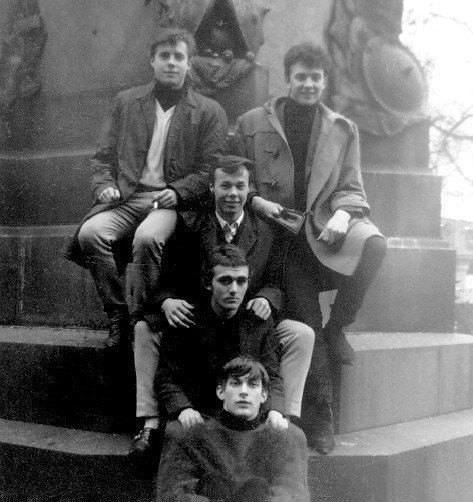
“We played all over the North of England”
When and where did David John & The Mood play their first gig? Do you remember the first song the band played? How was the band accepted by the audience?
John Brierley: I’m sorry but I can’t remember our first gig. We played all over the North of England. Again I can’t recall our first song but It was possibly the Bo Diddley song ‘Who Do You Love?’. It was a favourite and was a storming tune to open proceedings.
Fred Isherwood: I think our first gig with the permanent formation was at the Queens Hall in Preston. We’d had a bit of local publicity and the bands that we had come from all had their followers, so we did fine. Some gigs were better than others, but I can only recall one bad one. It was a pub full of elderly people. I think we gave them a bit of a shock!’
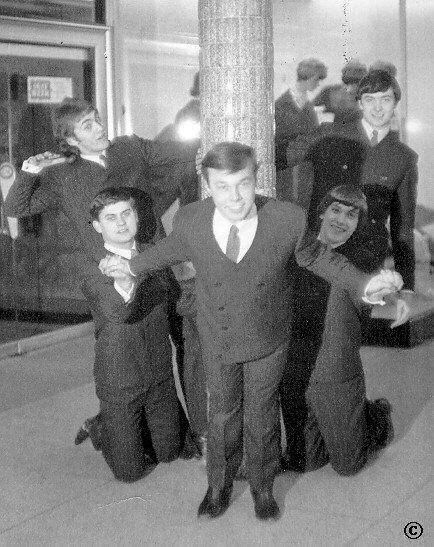
What sort of venues did David John & The Mood play early on? Where were they located?
John Brierley: The band were based in Preston, and we played at all types of venues, clubs both small and large, dance halls et cetera throughout the North of England. We also went down to London for a while and played at many clubs down there, including Eel Pie Island, The Ricky Ticky Club et cetera. Around this time we also toured with The Rolling Stones, Manfred Mann and P.J. Proby.
Fred Isherwood: We played mainly in cellar clubs in Manchester, Liverpool, Birkenhead (regularly on a Sunday), Wigan and Rochdale – to name a few. We have a ”brick in the wall” at the Cavern in Liverpool.
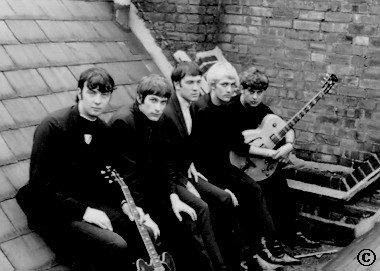
How did you decide to use the name “David John & The Mood”?
Fred Isherwood: David John Smith (Miffy) was a fantastic live blues singer – the audience on many occasions was spellbound. The Mood just seemed a good idea at the time.
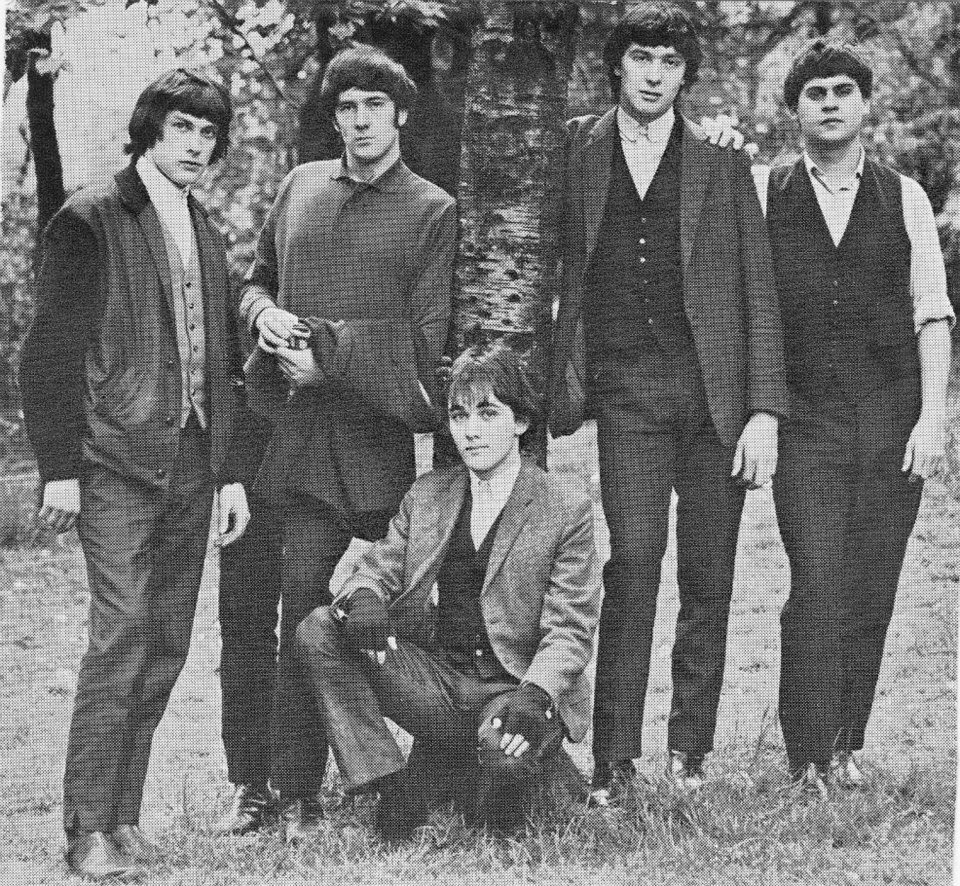
What influenced the band’s sound?
John Brierley: I suppose our main influences were blues and rock. The first two songs we recorded were written by Bo Diddley, we felt they went down well with the audiences, so this was probably why they were chosen. The band of course wrote “B” sides to all of our records.
Fred Isherwood: We tried to develop the sound of Bo Diddley, and covered quite a few of his songs as well as Chuck Berry, Muddy Waters, John Lee Hooker and Jimmy Reed who were favourites of Miffy.
What’s the story behind the singles you released?
Fred Isherwood: ‘Pretty Thing’ / ‘To Catch That Man’
This was recorded at the Regent Sound Studio in Denmark Street, London. ‘Pretty Thing’ was a Bo Diddley cover and the B side was written by us, the night before the session. When the paperwork had to be completed, we were asked the name of the composer, Miffy just said Charnley as that was the name of the street in Preston where our Administrative Office was situated. When asked what the initials were, he said jokingly “W.C.” (for Water Closet / Toilet!).
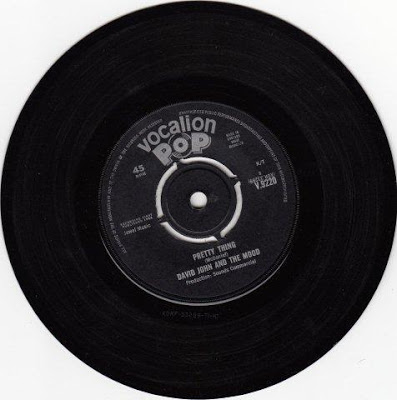
‘Bring It To Jerome’ / ‘I Love To See You Strut’
Recorded at Joe Meek’s Studio on Holloway Road, London. Another Bo Diddley cover, and W.C. Charnley B side. I was the bass backing singer on the Diddley number! This was our most successful record as far as sales were concerned.
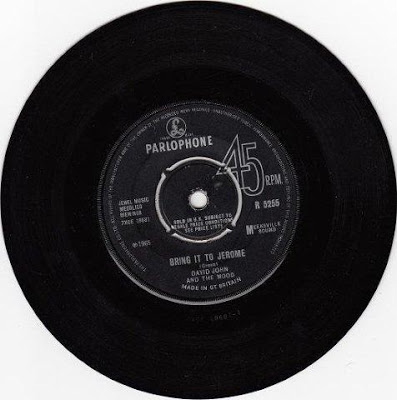
‘Diggin’ For Gold’ / ‘She’s Fine’
Joe Meek’s studio again. We were not keen on it, but it has been the most productive for us, as ‘Digging for Gold’ was used on an American TV series.
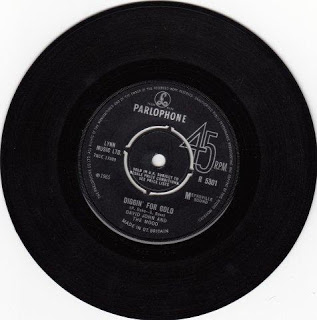
Peter Illingworth [from 2011 interview for It’s Psychedelic Baby! Magazine]: The a-side is a “drunken teenage rendition” of Bo Diddley’s ‘Pretty Thing’. The record credits McDaniel, but it was actually written by Willie Dixon, who sometimes played bass for Diddley. As far as the band was concerned, the take they used was not the best, and when one critic of Disc magazine described the record as “the sound of massed maracas” – we thought it was hilarious.
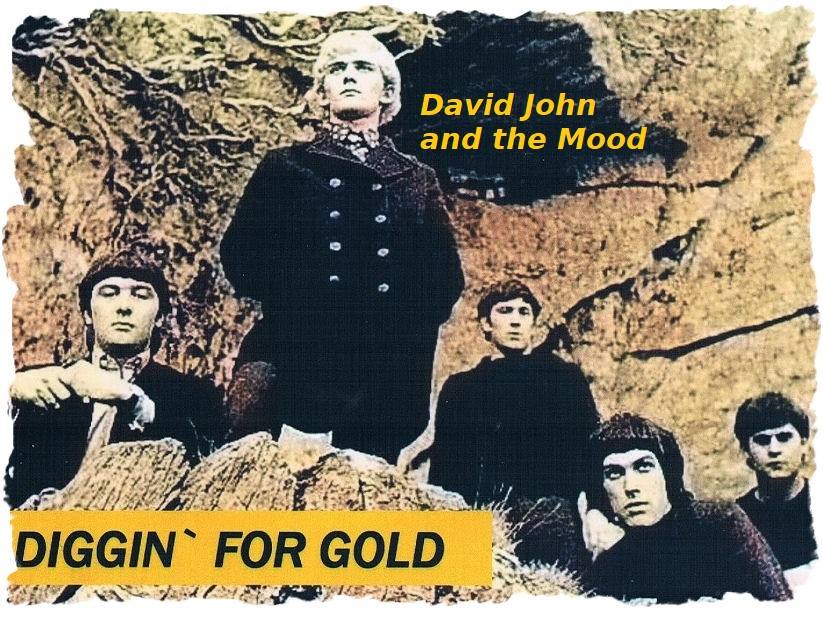
The b-sides of all three singles were co-written by the group. The pseudonym WC Charnley was invented for composer credits: The Moods’ managers’ address was on Charnley Street and the WC was derived from Water Closet.
The next casualty of our new transformation was bass player Rick Greenwood who was replaced by John Brierley, who had been working in Freddie Starr’s Midnighters and by mid-’64 the definitive line-up had been settled.
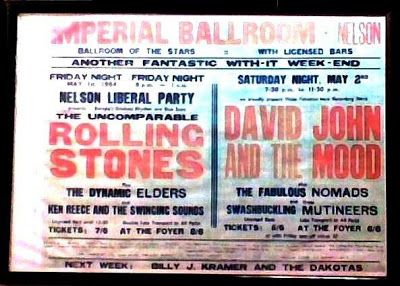
Please share your recollections of the sessions.
John Brierley: I can’t remember much about the ‘Pretty Thing’ recording, but my abiding memory is recording the other two tracks at Joe Meeks’ studio in Holloway, London. All his gear was set up in what looked like bedrooms, but it all worked and of course Joe produced many many bands.
Fred Isherwood: When it came to recordings, it was a very frustrating time for us. Miffy was a blues singer through and through and would not do anything that would sound “commercial”. As a consequence, none of us particularly liked our records – but for different reasons. However, it must be stressed that we never argued about anything. We all got on well together and really enjoyed performing together and the life that we led for three years.
We also did a recording session at the EMI Studio on Abbey Road. We had publicity photos taken at the top of the stairs, exactly where the Beatles had posed for the cover of an album! Pete Illingworth tried to locate this (and other) sessions, but to no avail.
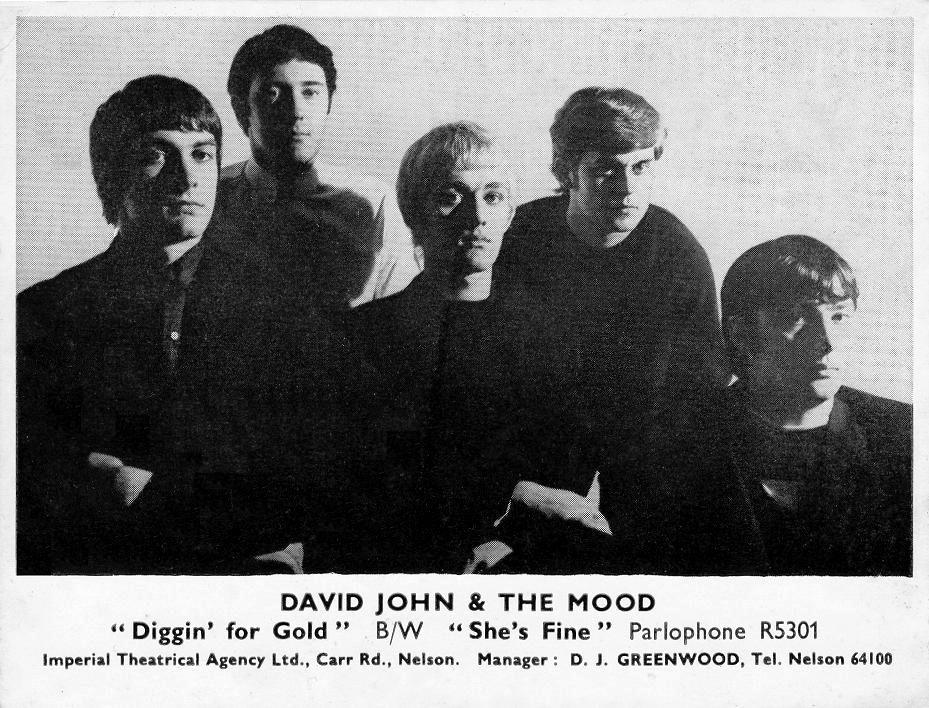
Peter Illingworth [from 2011 interview for It’s Psychedelic Baby! Magazine]: David John & The Mood also appeared on a television documentary programme called Scene at 6.30 on Granada, Harlech TV’s ‘Discs-a-gogo’ from Bristol and the ‘Lucky Stars summer spin’ on ATV. When the first single record was released in the Summer of 1964 when we were signed to Eric Easton, Rolling Stones manager. The band secured a spot on The Rolling Stones / Peter & Gordon UK Theatre Tour, on which we opened the show, then backed Julie Grant. In the second part of the show John and Fred backed The Overlanders Trio and our future looked very rosy.
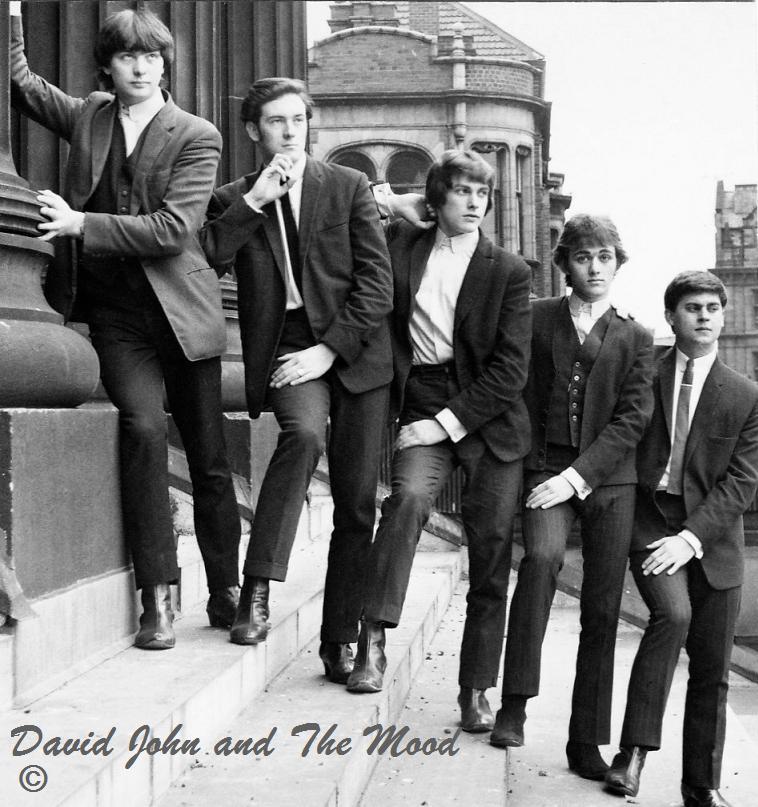
Unfortunately there was a contretemps on the last day of The Stones tour and after much heart searching we decided to leave The Eric Easton Organisation. There was a feeling that we were going to be used to back other artistes rather than be promoted on our own merits, having backed some of their artistes like Bert Weedon, The Brooks Brothers and Julie Grant in recent months.
In our floundering after the Eric Easton debacle we were approached by an agency called New Age Partnership from Poulton-le-fylde in Lancashire and on the strength of a P.J. Proby world tour we signed to them. Our manager was now Captain Kevin Beery who was a partner in the agency and who proceeded to hawk us around. ‘Pretty Thing’ had not sold well in the event, but was reference enough to play gigs in the prestigious London music-clubs like The Marquee, The Crawdaddy Club, The 100 Club and Eel Pie Island. We had two fan-clubs: One was run by Beverly Witham of Whalley, Lancashire, the other was Kathy in Camberwell, South London.
We gained a reputation as live-act very soon and proceeded to the one-nighter circuit and were doing good business in the London clubs and R&B clubs up and down the country appearing with some of the major American artistes like Little Richard, Sonny Boy Williamson and John Lee Hooker and our home grown talent like The Stones, The Yardbirds, Manfred Mann amongst others.
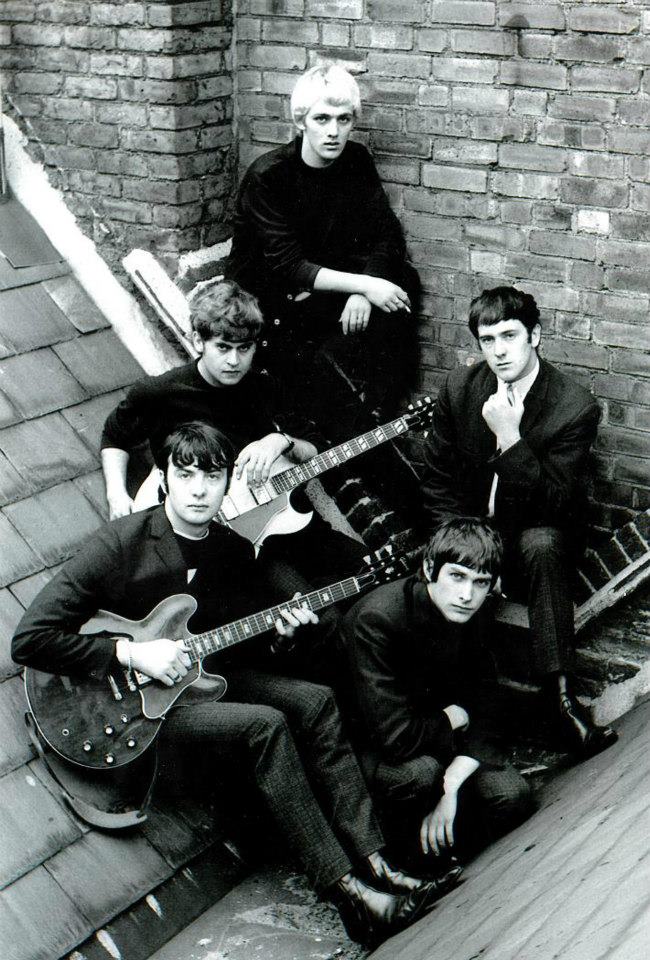
On the P.J. Proby tour we were booked to play three nights a week in the UK, major cities on the continent, South Africa, Australia and New Zealand and coast-to-coast America. However, there were problems on the very first night at The Tower Ballroom, New Brighton (across the Mersey from Liverpool) when Proby, who was being paid a percentage of the gate, disputed the numbers they said had paid to come in. Consequently on the second night at The Palace Theatre, Manchester he didn’t show at all. We still had to play and we were backing a girl singer called Julie Grant who by default became the top of the bill. The other band on the bill were The Sunliners from Blackpool, also managed by our agency. The show went well, but the audience who’d really come to see Proby wanted their money back. New Age Partnership lost a bomb and still had to pay for the hire of the Theatre.
The next night at the Fairfield Halls in Croydon, South London Proby arrived but demanded his fee before he set foot on stage. After the shows Captain Beery announced that the tour was cancelled. We were out of work!
Through Beery eventually we started working for Georgio Gomelski who represented The Yardbirds, Julie Driscoll and The Brian Auger Trinity and Gary Farr and the T Bones. Playing the clubs such as Ricky Tick circuit, Eel Pie Island and Richmond Athletic Ground.
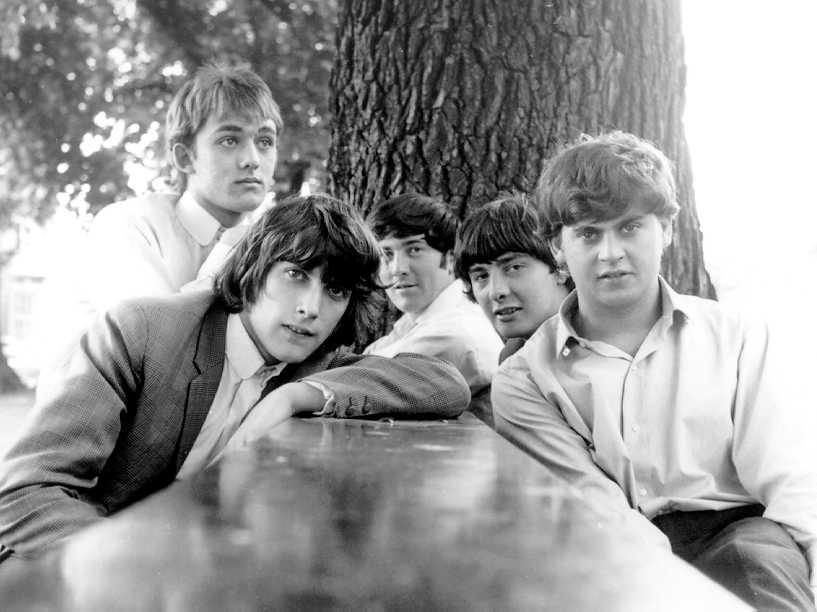
We rented a grotty house in Thornton Heath, South London and before long Gomelski said he wanted us to record for him. However, we had been warned by Gary Farr and the T Bones that their band had little option in their choice of material and were practically dictated to by Gomelski. In retrospect maybe they were trying to keep us out of their set up with Georgio. It also meant that we’d be tied to Captain Beery who we had grown to dislike. That worried us and we were persuaded by friends from a Preston band, The Puppets, who had been backing Gene Vincent, to go and see Joe Meek in Holloway who was famous for Telstar with the Tornadoes and the Have I the right with the Honeycombs and many more. The Puppets had recorded Poison Ivy with Joe. As luck would have it Joe Meek wanted us in his Holloway Road studio the same day that Gomelski had booked a studio for us in Soho Square.
Joe Meek himself was very elusive but we hounded him until he agreed to listen to us and we were very impressed with the care he took in preparing for just an audition as though it really mattered to achieve a great sound. He even put microphones on all the drums and made great efforts to achieve a good result. After our experiences at other recording tests like with HMV Records and Norman Newall this was certainly an innovation. Newall had already decided we weren’t going to get a deal before we set up the equipment, in fact he more or less said don’t bother tuning up properly, just play. We were slotted in for about 10 minutes between The Swinging Blue Jeans and The Remo Four. Not a very rewarding experience.
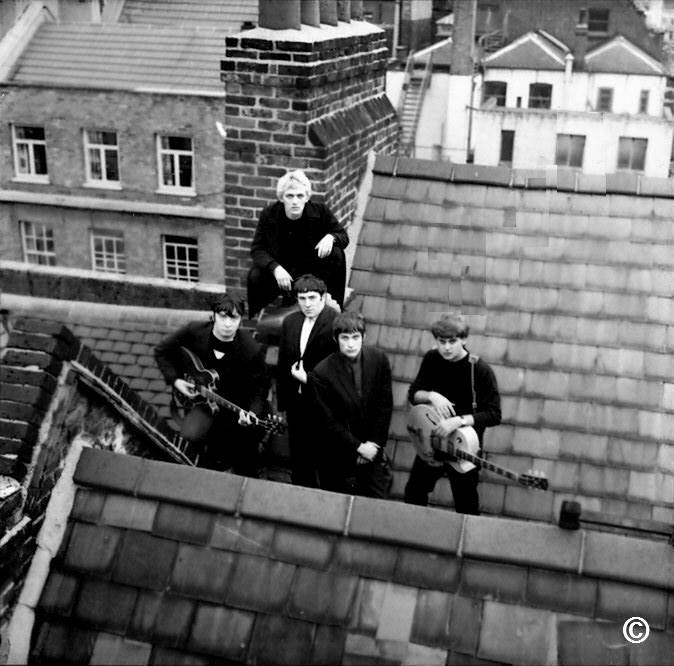
Joe immediately said he wanted to work with us and set about arranging a date for our first recording.
As luck would have it Joe Meek wanted us in his Holloway Road studio the same day that Gomelski had booked a studio for us in Soho Square. We had to confess to Gomelski that we’d chosen to go to the Joe Meek session and subsequently he went absolutely crazy and said that he would finish us in London. Effectively he did and closed the door on most of our London engagements. So everyone was playing power games and he made it very difficult for us to get work so we moved back to Lancashire.
We went to Joes’ studio and recorded ‘Bring It To Jerome’ / ‘I Love To See You Strut’.
Our second single was again a Bo Diddley cover, written by his percussionist Jerome Green. It was produced by Meek at his studio in Holloway Road. The outstanding rhythm-backing was created with the help of Joe Meeks inventive recording tricks. He told ‘Fabulous 208’: “Drums aren’t always the best thing to bash when you want a heavy offbeat – I always look round for something to beat, and we use screens, doors and the like … DJM needed a steely sound on the offbeat” and David John tells how they got it:
“After we’d recorded ‘Jerome,’ we felt we’d needed something different to add to it. I went to the toilet and dismantled the metal chain … and when I got back to the studio, Joe’s eyes lit up and he immediately left the room, returning with an old biscuit tin. We dropped the chain into the tin on the beat, and Joe layered it with echo and mixed it into the recording. It sounded fantastic”.
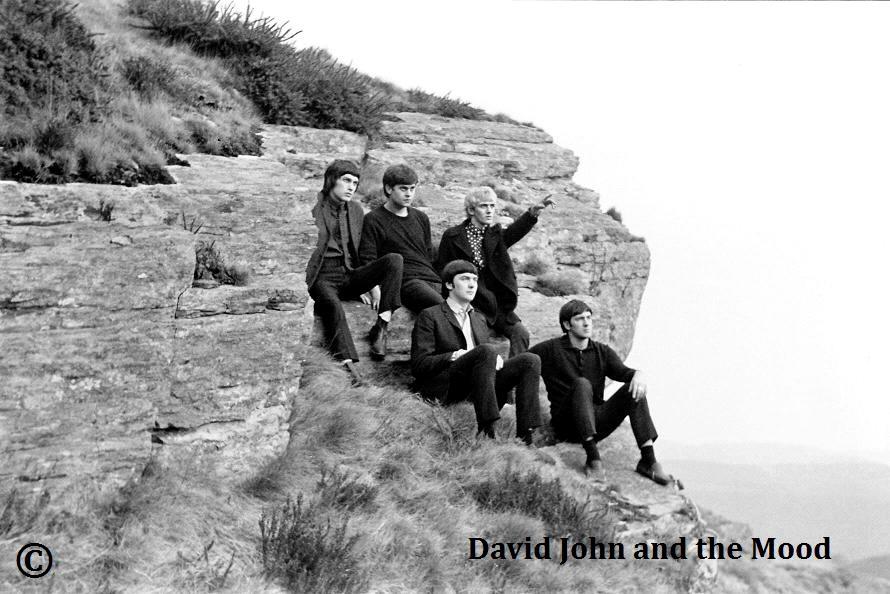
Gene Vincent once proclaimed to David: “Listen son, I know what makes a good record and I’m telling you it’s a damn fine one”. David John stated that he would be forever grateful to Joe Meek for his production. Meek himself also held the band in high regard and he said: “DJM is the weirdest and most unusual group I ever worked with and the most talented in this type of music. – I was bombarded by this group several months back. They were not easily put off by a notice “No Admittance” on the door. They waited several hours for the arrival of a vocalist who came to put her voice on a backing track – as the door was open they filed into my office. “We want to cut a record here, they can’t get the sound we want at other studios and we know we can make a hit for you,” said John. “They got their contract and I feel this is a group, which is going to create a tremendous impact with ‘Bring It To Jerome'”.
Sadly the public didn’t understand and the single got nowhere near the charts. Some critics found the idea of a Bo Diddley cover “a bit outdated”, whilst most of them praised the performance and the sound. It was only on the collectors market that the David John & The Mood records became famous and created a myth around ourselves. The quality of the DJMs’ records was so high that many rumours spread who could be responsible for them. David John was often confused with David Bowie (then marketed as David and Davie Jones) and then David O’List (who played with The Attack and Nice among others).
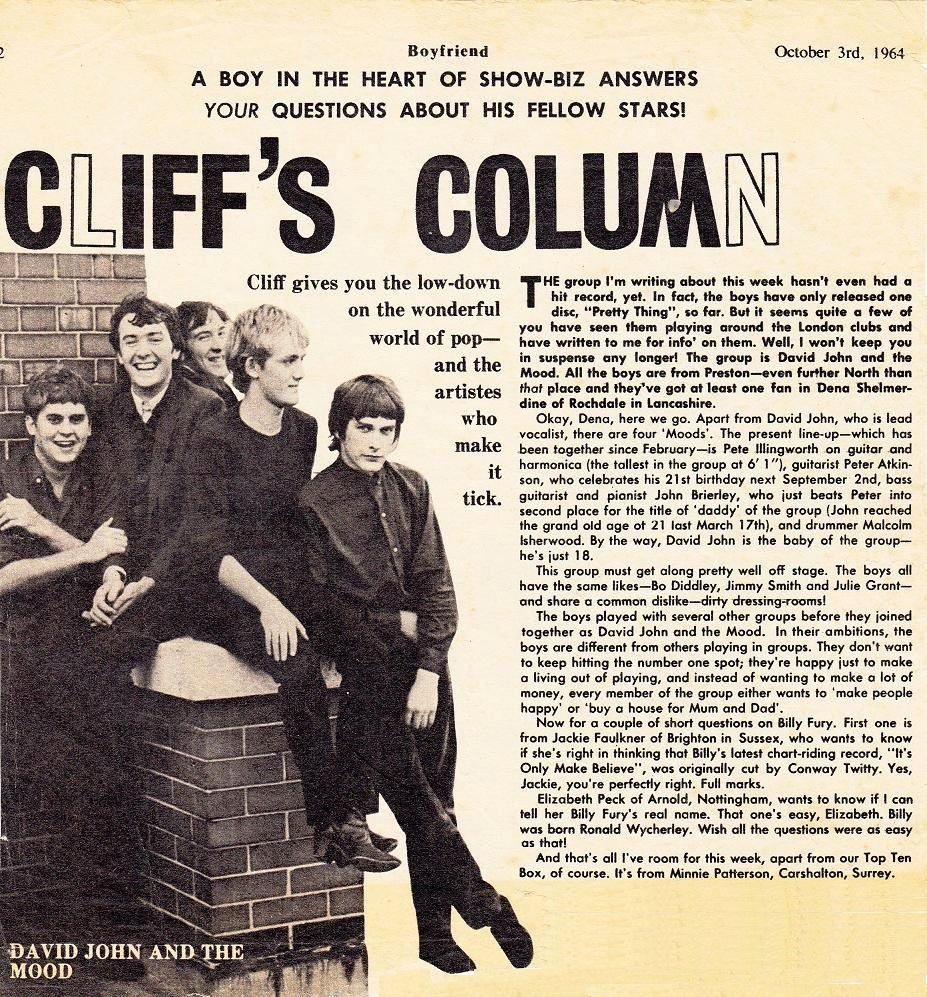
Eventually, after much unpleasantness, we had to pay New Age Partnership to be released from their contract. They were not getting us enough work for us to exist and several months later we signed to Nelson Imperial Agency on Joe Meeks’ advice as in part of the deal they’d agreed to provide some money to promote us. They never did come up with the funds. They were situated in the biggest Ballroom in the UK in Nelson in Lancashire. Most American acts performed their first gigs there when they arrived to tour in the UK along with the major UK acts. We went to watch there to see The Byrds and we shared a revolving stage there with The Who in a later group, Purple Haze. The Mood were booked to perform when The Hollies had to cancel and though the place was packed no-one asked for their money to be refunded. It was a very good venue for us and that’s why they offered to represent us.
Joe Meek also produced our third and last record ‘Diggin’ for Gold’. It had some success on the pirate radio ships, but didn’t get much airplay nationally. The song on the a-side was suggested by Meek but was not one of the bands favourite tracks. Unfortunately he shot himself before we had the opportunity to record more with him and put an end to our recording career. The B side ‘She’s fine’ was once again self penned.
Acetate versions of the singles surfaced on numerous compilations ‘Revenge Of The Amphetamine Generation’ (‘Purple Heart Surgery Vol. 4’), ‘Broken Dreams Volume 2’, ‘Transworld Punk Rave-up Volume 2’, ‘Pebbles Vol. 6’. In CD format on ‘Joe Meek Freakbeat: You’re Holding Me Down’, ‘Joe Meek The Alchemist of Pop’, ‘Joe Meek the RGM Legacy Portrait of a Genius’, ‘Maximum R&B’, ‘English Freakbeat’, ‘Diggin’ for Gold’, ‘RGM Rarities Volume 2’, ‘The R&B Scene’, ‘Rare 60’s Beat Treasures Volume 1’ and ‘A History of UK Blues and R&B 1955 – 2001’, amongst others.
We recorded ‘Heartbreaker’ (a blues ballad by Bobby Freeman) and ‘It’s So Exiting’ during the ‘Diggin’ For Gold’ sessions. But they never saw the light of day.
In his wisdom our new manager Derek Greenwood proclaimed in an interview “Beat as such is on the way out but we are hoping that David John’s “moody” sound is what the kids will want next – we have a lot of faith in these guys, which is why we are going all out to promote them in a big way”. If only they had. I was getting most of our work from my old contacts and we were still having to pay the Nelson Imperial Organisation commission for our gigs. Not a very satisfactory situation at all.
It wasn’t long before dissent set in and the band gradually fell apart. Pete Atkinson being the first to decide to leave and at that point we agreed that that was the only course of action to free ourselves from such poor management. David John and The Mood broke up in early 1966.
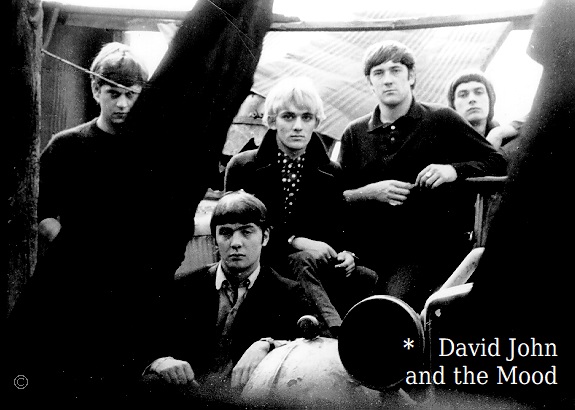
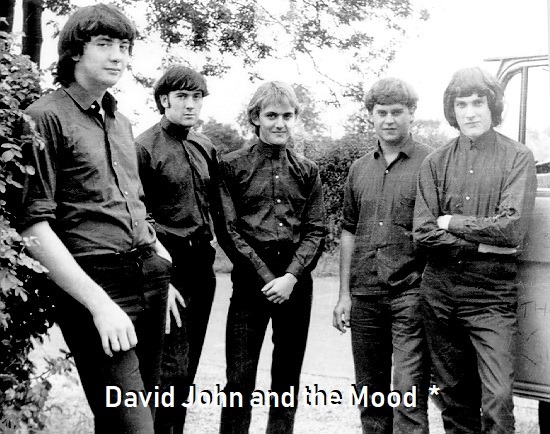
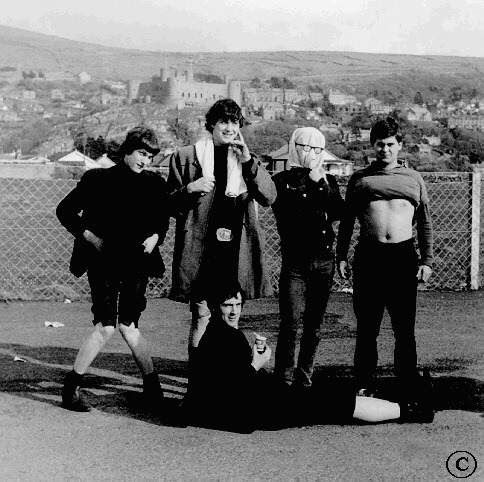
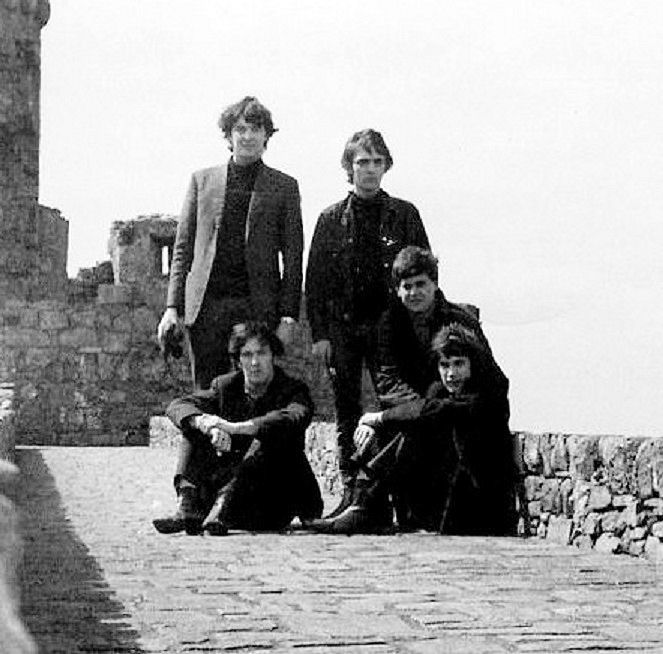
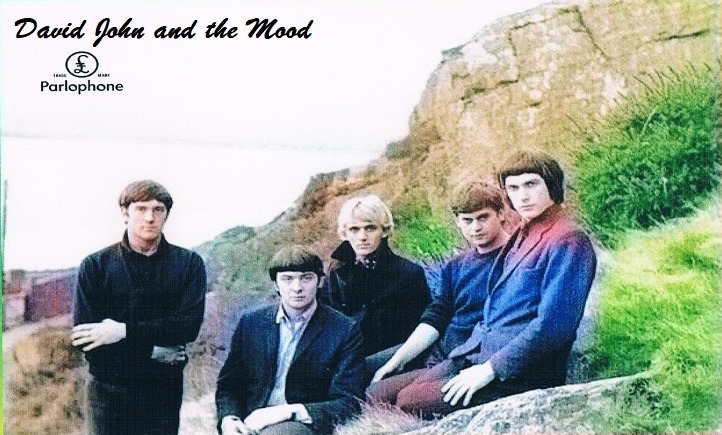
Were you involved with any other bands after?
John Brierley: When The Mood split I joined the police force, and lost contact with the other group members for some years. During my time in the force, I played guitar. Now, I played in other bands i.e. Contact, these were all police officers and played at local venues for free, drumming up support for local charities et cetera. After I left the force I continued to play in various bands i.e. Contact Mark 2, Bobby D’ell and the Playboys (don’t ask) and The Buzz.
Fred Isherwood: Whilst playing with David John & The Mood, I was lucky enough to do a gig for Little Richard at Rochdale, and for Gene Vincent at Newport. On both these occasions, their regular drummer was ill. John Brierley and myself also backed John Lee Hooker, Sonny Boy Williamson and Peter and Gordon. Julie Grant also used us as her backing group on several occasions.
[Editor’s note]: Read more about what followed for Peter Illingworth forming Purple Haze and Little Free Rock at: www.psychedelicbabymag.com/2011/09/little-free-rock-interview-with-peter.html
What happened after the band stopped? Were you still in touch with other members? Is any member still involved with the music?
John Brierley: After several years I regained contact with The Mood members. Dave did some gigging with local blues bands. Peter Atkinson gave up the music business and went into retailing, Fred surprisingly became a purser on a Cross Channel Ferry. Pete Illingworth was the only one to pursue a music career. Unfortunately both David John and Peter Illingworth have sadly since died.
Fred Isherwood: We folded in 1965 as some of us wished to move on in life. However, we remained good friends and have kept in touch with each other throughout our lives. I moved to the south of England in 1965. I continued to play drums for the next 57 years but only as a professional for a week when I did some work in the Marlowe Theatre at Canterbury. I have just done an amateur production of Oklahoma! That ended on Sunday. Our orchestra consisted of piano, double bass, flute, clarinet and (of course) drums.
Pete Illingworth had a few bands for quite a few years. Peter Atkinson had a successful business, John Brierley had a career in the police force, and after teaching for a while, I spent over 30 years in the Merchant Navy.
Miffy tried to continue with his singing career, but never attained the success he had with the Mood.
Looking back, what was the highlight of your time in the band? Which songs are you most proud of? Where and when was your most memorable gig?
John Brierley: Looking back we had some wonderful times together, we were a bunch of ordinary Northern lads who had a fair amount of fame in our time. There are no particular highlights of our time together, except to say that I had a blast. Possibly one of the most memorable gigs, was at Sheffield City Hall on The Rolling Stones tour. Unfortunately the local newspaper had said that The Stones loved Jelly Babies. We were the first band on and as the curtains opened we were showered by thousands of these sweets, and I can tell you they really hurt when thrown from the top balcony. By the time we had finished our spot, the stage was awash with sticky Jelly Babies and the stagehands had to come on and sweep them all off before the next act could do their thing.
Fred Isherwood: The highlights were touring with The Rolling Stones and P.J. Proby. We also had a fairly successful 3-month stint playing in London. One big disappointment for us was the write-up in the New Musical Express during The Stones tour. We had never heard of The Rolling Stones when we had put our act together and yet they wrote us off as “Stones copyists”. That did upset us. My most memorable gig was at Nelson Imperial Ballroom, when 3,000 fans stood transfixed and would not let us leave the stage. Miffy had a unique skill, in that if a number was going well, he could make it last as long as 20 minutes, making new words up as he went along!
Is there any unreleased material by David John & The Mood?
Fred Isherwood: None could be found.
Klemen Breznikar
All the photos used with permission from Peter Illingworth (personal archive) | Headline photo: David John & The Mood | Malcolm Fred Isherwood, Peter Illingworth, John Brierley, David John Smith and Peter Atkinson
Little Free Rock interview with Peter Illingworth

